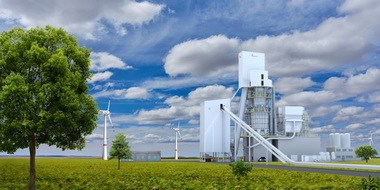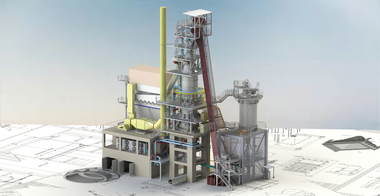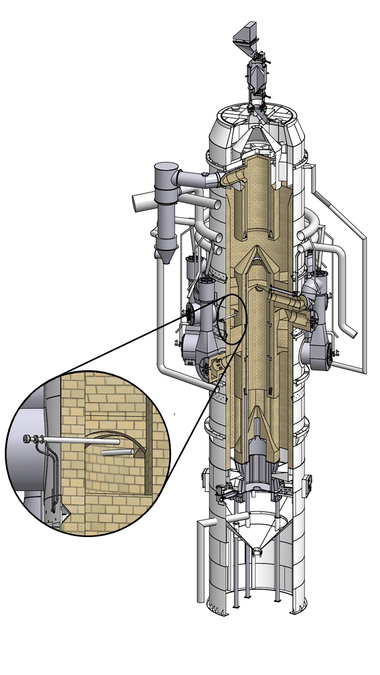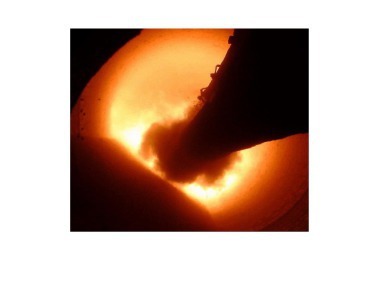CO2 emissions: meeting the challenges for the lime industry in South Africa
The lime industry in South Africa developed initially with vertical kilns, but from the 1950s new kiln capacity has been based almost entirely on rotary kilns with coal used as fuel for kiln firing. Dependence on both rotary kiln technology and coal as fuel presents challenges, in terms of operation and process equipment, in addressing and managing CO2 emissions.
1 Introduction
From the early 1900s, development of the lime industry in South Africa was driven by the needs of the mining and metallurgical industries, with production based on mixed-feed shaft kilns of traditional design. The first major lime plant was in the Northern Cape Province, at Taung, which, in 1924, received international recognition following discovery of the skull of the “Taung Child” embedded in the limestone.
By 1949, it was evident that the rapid development of the new uranium industry would be a major consumer of lime and that a new, extensive limestone source would be...

![1 Capacity and lime kiln type in South Africa [2] compared with USA and Europe [3]](https://www.zkg.de/imgs/1/9/0/0/4/4/2/tok_a0b554e4fa1d5b916420db561a571e41/w300_h200_x421_y297_F1_SA_Lime_kilns_capacity_comparison-2a45191c4758fdb2.jpeg)
![2 Lime plant location in South Africa and gas pipeline network [17]](https://www.zkg.de/imgs/1/9/0/0/4/4/2/tok_e13e04190168584755013254beb94220/w300_h200_x569_y357_F2_Plant_location___gas_pipeline_network-a05588b76f6386f3.jpeg)
![3 Map of the biomes of South Africa [22] with location of lime plants added](https://www.zkg.de/imgs/1/9/0/0/4/4/2/tok_d61bedcf32e1e8a46d5465a4e303b32c/w300_h200_x524_y437_F3_Biomes_and_lime_plants-9ed9a211f0dcc211.jpeg)
![4 Kuruman Mountain Bushveld – climatic conditions [22]](https://www.zkg.de/imgs/1/9/0/0/4/4/2/tok_bbd85e2ca86f49dfa3b4468671262f27/w300_h200_x481_y180_F4_Kuruman_Mt_Bushveld_climate-fe85c3153686dfd6.jpeg)
![5 Kuruman Mountain Bushveld – between Danielskuil and Kuruman in the Northern Cape (altitude 1680 m) [22]](https://www.zkg.de/imgs/1/9/0/0/4/4/2/tok_40e57934e7704e0d2250784d9b4ab7e1/w300_h200_x455_y306_F5_Kuruman_Mountain_Bushveld-540f788a760298a1.jpeg)
![6 Sickle bush (Dichrostathys cinerea) – Waterberg, Limpopo Province [28]](https://www.zkg.de/imgs/1/9/0/0/4/4/2/tok_844278d256909ce4370798c88763f9de/w300_h200_x567_y412_F6_Sickle_bush-dee3ace64fc857c4.jpeg)
![7 Reduction in wood calorific value (LHV) with increasing moisture [8]](https://www.zkg.de/imgs/1/9/0/0/4/4/2/tok_e8f2e6f394f075ac81901a48332fd67d/w300_h200_x421_y297_F7_Wood_calorific_value_vs_moisture-be3746db2244affc.jpeg)
![8 Wood biomass processing for lime kiln firing [19]](https://www.zkg.de/imgs/1/9/0/0/4/4/2/tok_2f3fda1870c99d34e0c984f33593f8b7/w300_h200_x546_y119_F8_Biomass_processing_kiln_firing-e75a32d8d231d8be.jpeg)
![9 Rotary lime kiln layout [37] with biomass and solid fuel preparation systems for indirect firing replacing the original direct-fired system](https://www.zkg.de/imgs/1/9/0/0/4/4/2/tok_23856f522132b5670f8110bb1f5ae7b7/w300_h200_x535_y357_F9_Kiln_with_fuel_preparation-91f812c41fa8536e.jpeg)
![10 Pebble lime contact cooler [40]](https://www.zkg.de/imgs/1/9/0/0/4/4/2/tok_aadbb1a8cf30e12613853edcec83fc6a/w300_h200_x461_y399_F10_Lime_contact_cooler-a963a1281c3fff3d.jpeg)
![11 Cement kiln for oxyfuel firing with 2-stage grate cooler operation [41]](https://www.zkg.de/imgs/1/9/0/0/4/4/2/tok_a9334cd5a5d7da0e1db247b857a0c834/w300_h200_x550_y323_F11_Oxyfuel_firing_with_grate_cooler-923f5aff0d516385.jpeg)




